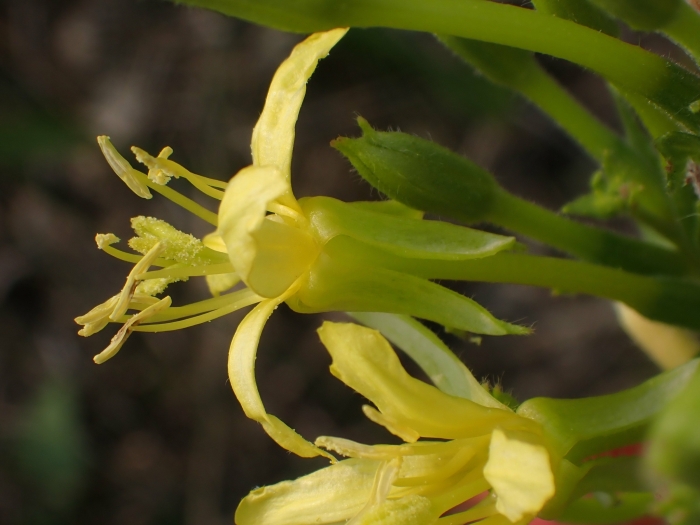Northern Evening Primrose
(Oenothera parviflora)
Northern Evening Primrose (Oenothera parviflora)
/
/

© Mary Krieger
CC BY 4.0
Image By:
© Mary Krieger
Recorded By:
Copyright:
CC BY 4.0
Copyright Notice:
Photo by: © Mary Krieger | License Type: CC BY 4.0 | License URL: http://creativecommons.org/licenses/by/4.0/ | Uploader: marykrieger | Publisher: iNaturalist |























Estimated Native Range
Summary
Oenothera parviflora, commonly known as Northern Evening Primrose, is a biennial herb native to open woodlands, grasslands, and disturbed sites in northeastern North America. It is adaptable to a range of habitats, which contributes to its invasive potential in regions such as Europe, Asia, South Africa, and New Zealand. This species typically grows up to 5 feet tall and features a rosette of lance-shaped leaves at its base with flowering stems that are leafy and erect. The plant is known for its yellow flowers that bloom in the evening and remain open until the following day, attracting nocturnal pollinators such as moths, as well as bees. The flowers are followed by elongated seed capsules that facilitate its prolific spread by seed.
Northern Evening Primrose is valued for its evening-blooming, fragrant flowers that can add interest to night gardens or naturalized areas. It is often used in wildflower gardens, borders, and for erosion control due to its rapid growth and ability to thrive in poor soils. It prefers full sun to part shade and is tolerant of a variety of soil types, though it performs best in well-drained soils. While it requires minimal maintenance, gardeners should be aware of its potential to self-seed and become weedy. In areas where it is invasive, control measures may be necessary to prevent unwanted spread.CC BY-SA 4.0
Northern Evening Primrose is valued for its evening-blooming, fragrant flowers that can add interest to night gardens or naturalized areas. It is often used in wildflower gardens, borders, and for erosion control due to its rapid growth and ability to thrive in poor soils. It prefers full sun to part shade and is tolerant of a variety of soil types, though it performs best in well-drained soils. While it requires minimal maintenance, gardeners should be aware of its potential to self-seed and become weedy. In areas where it is invasive, control measures may be necessary to prevent unwanted spread.CC BY-SA 4.0
Plant Description
- Plant Type: Herb
- Height: 1.5-3 feet
- Width: 1-2 feet
- Growth Rate: Moderate
- Flower Color: Yellow
- Flowering Season: Summer, Fall
- Leaf Retention: Deciduous
Growth Requirements
- Sun: Full Sun
- Water: Medium
- Drainage: Fast
Common Uses
Bee Garden, Bird Garden, Butterfly Garden, Deer Resistant, Drought Tolerant, Groundcover, Low Maintenance
Natural Habitat
Native to open woodlands, grasslands, and disturbed sites in northeastern North America
Other Names
Common Names: Slender Evening Primrose, Small-flowered Evening Primrose
Scientific Names: , Oenothera parviflora, Oenothera ammophiloides var. flecticaulis, Oenothera ammophiloides var. parva, Oenothera angustifolia, Oenothera angustissima, Oenothera angustissima var. angustissima, Oenothera angustissima var. quebecensis, Oenothera apicaborta, Oenothera atrovirens
GBIF Accepted Name: